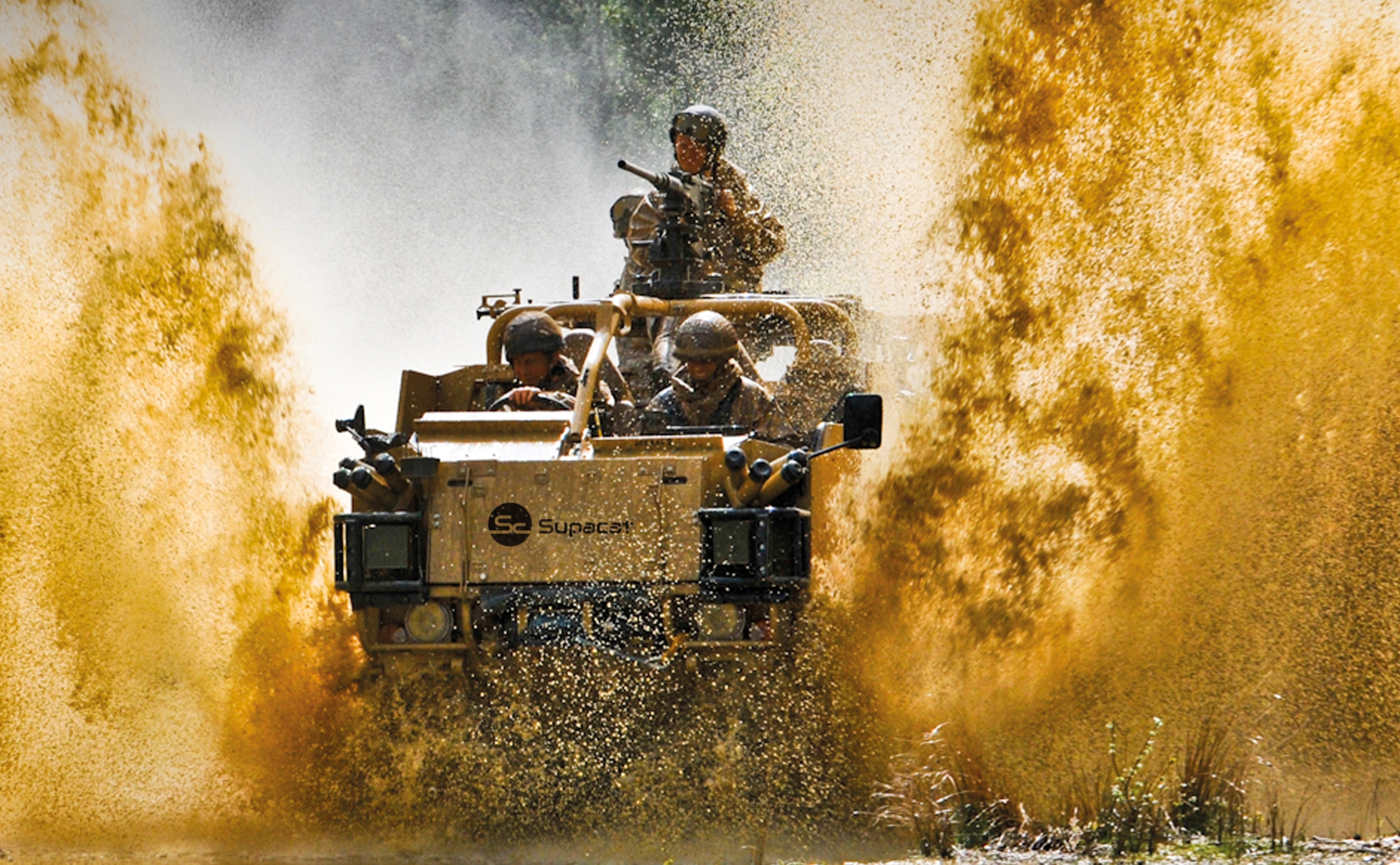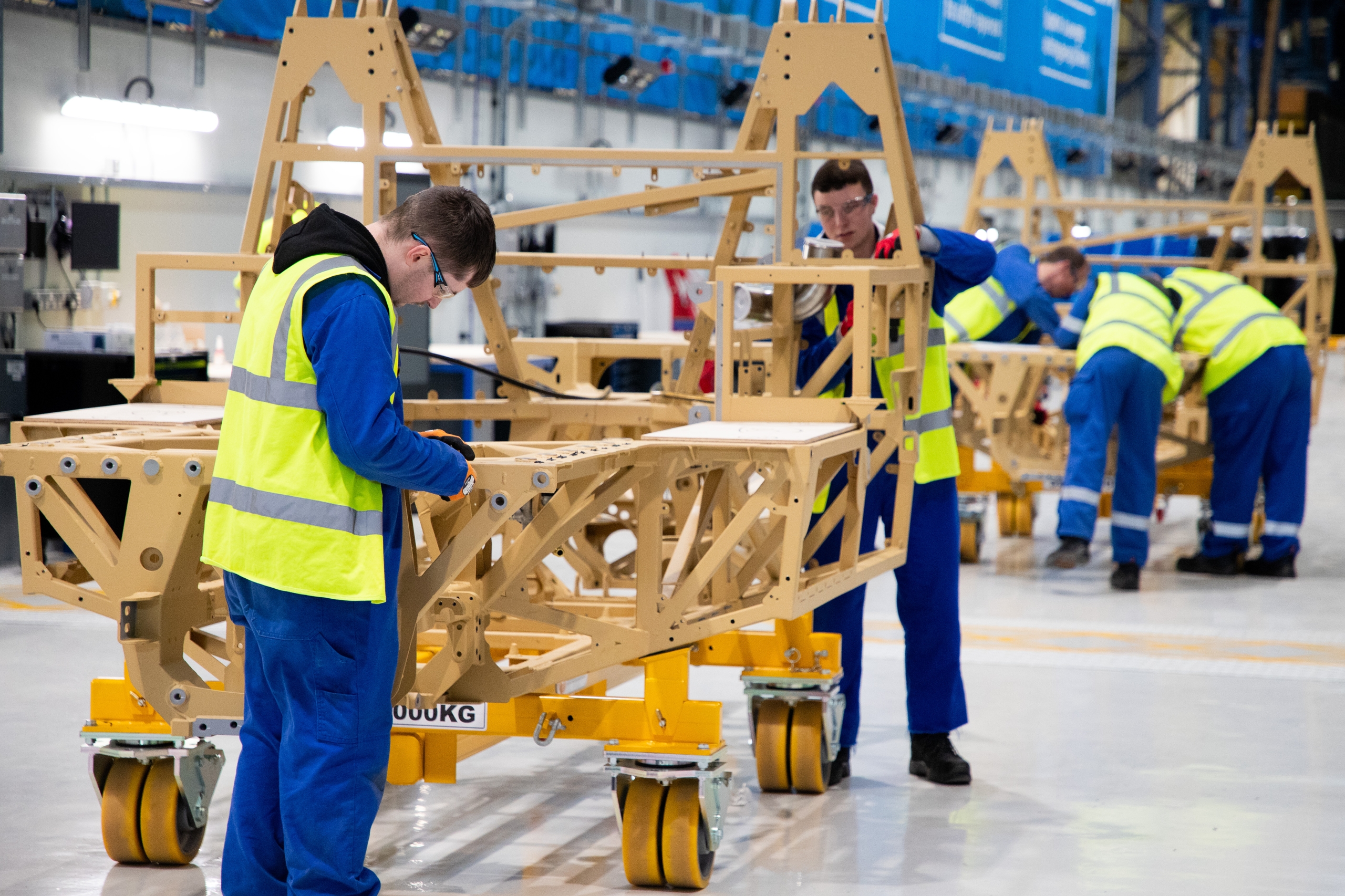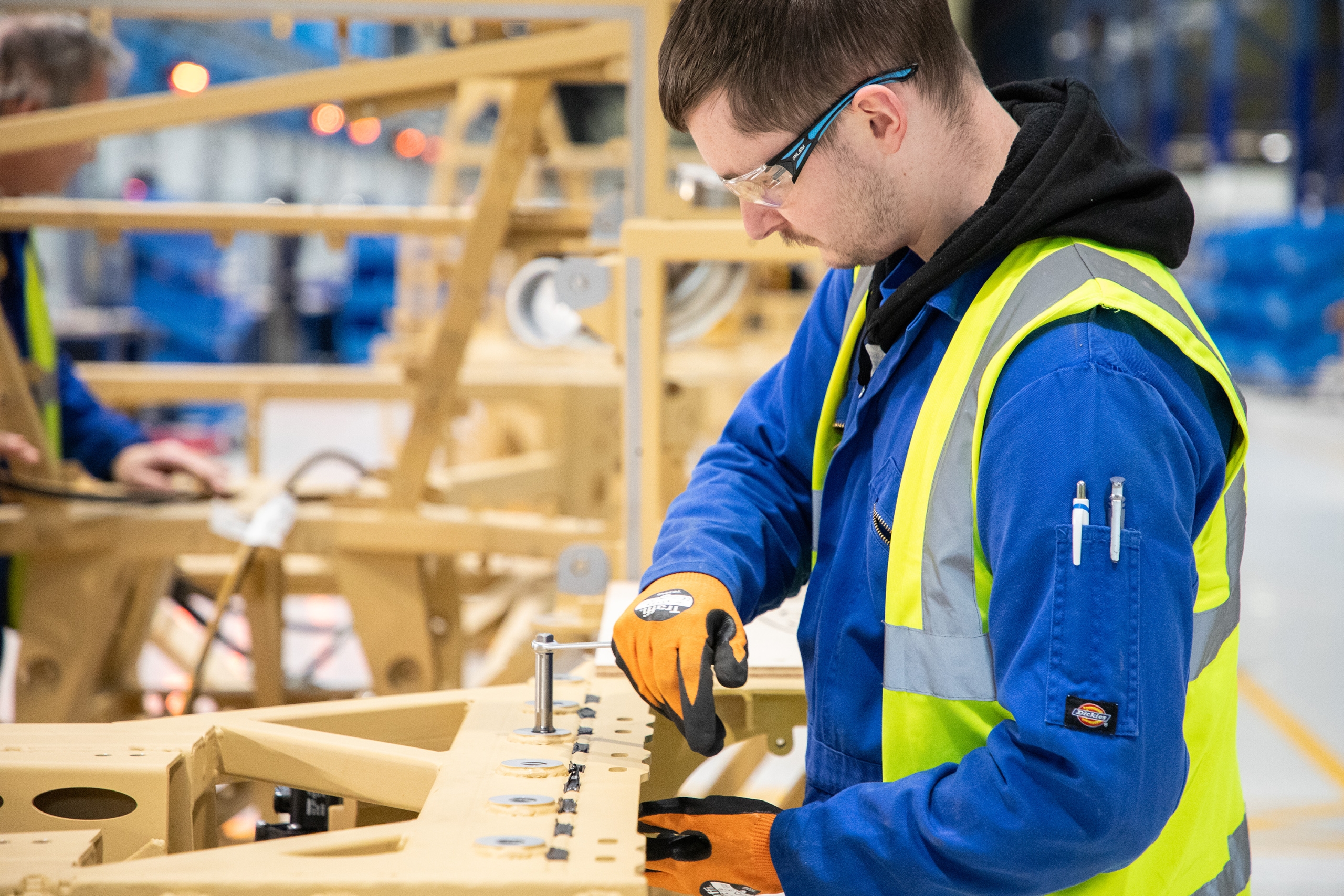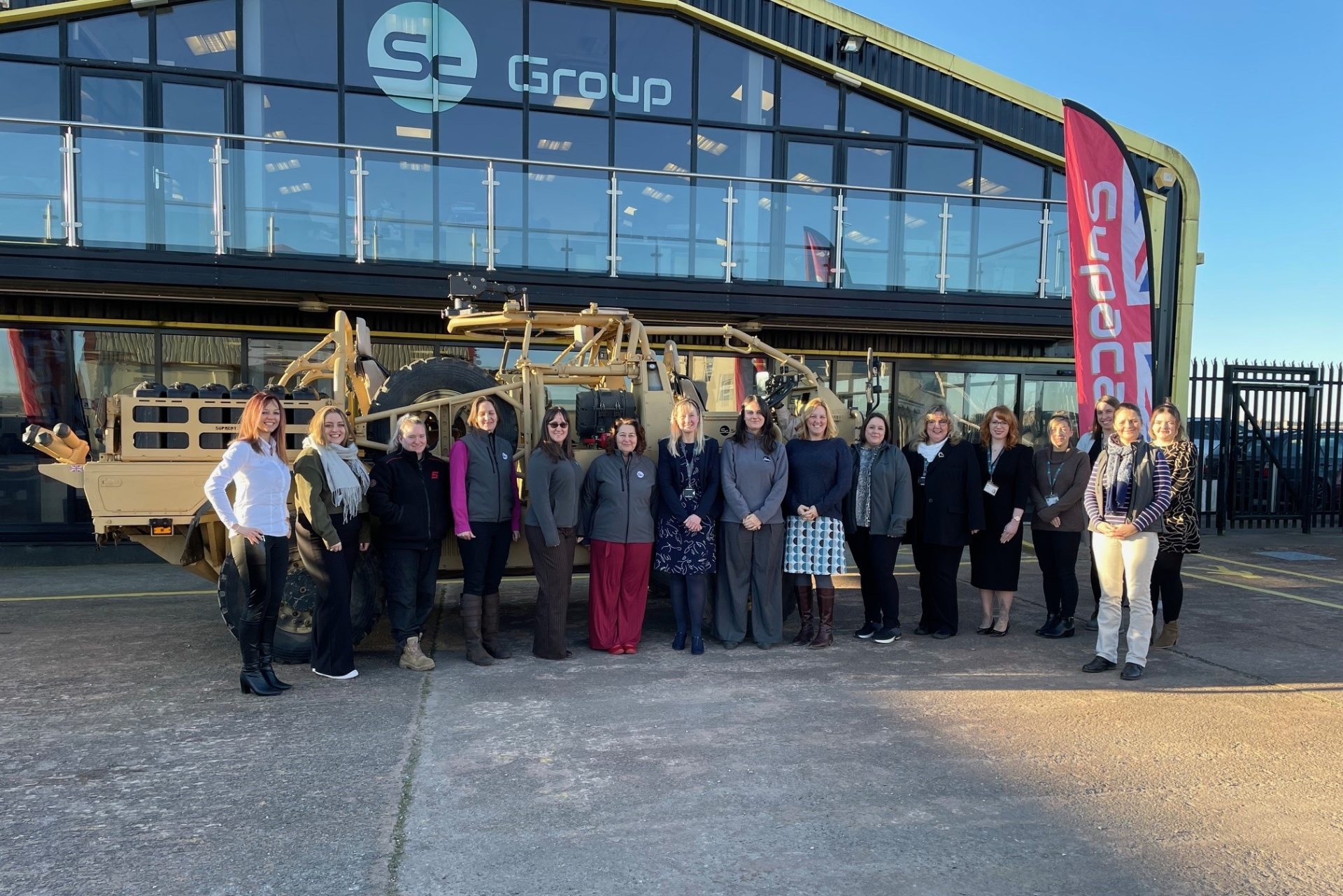6 minute read - 14th April 2025
Supacat: The British-built all-terrain vehicle redefining military mobility
With defence spending being dramatically increased in the UK, and across Europe and much of the rest of the world, the adaptable, modular design of Supacat, a high mobility transport vehicle made in the SW of England, is seeing its time come.
While charging across the Surrey countryside by Farnborough Airfield, through bogs, over sandhills, weaving between trees and splashing through puddles big enough to have been left over from the Great Flood, one cannot help but be impressed with the way that Supacat handles everything it comes across. It is officially designated as a Highly Manoeuvrable Transport (HMT). Designed and manufactured in the UK, it has been developed as a replacement for Land Rover-based light weapons vehicles.
The need for speed
“The MoD (UK’s Ministry of Defence) defined its needs for something that was slightly faster, had more payload and with superior suspension than the existing Land Rover Pinkie vehicles,” said Phil Applegarth, Director of SC Group, Head of Supacat Innovation. He has been with the company since 2009. Supacat differs from the Land Rover-based solutions right from the start. Its predecessor was a conversion of an existing platform, which had a long role in military applications but was also well-known in civilian environments, in farming in particular. Supacat is designed from the ground up to be a specialist vehicle, especially capable for long-range desert patrolling, as requested by a number of user groups.

The HMT (Highly Manoeuvrable Transport) is designed and manufactured in the UK / Picture: Supacat Group
The suspension is about more than just a comfortable ride for onboard personnel. As the wild dash through the woods made clear, during which we reached speeds up to 90kmh (over 50mph), it’s about maintaining rapid progress while delivering people and payload intact and ready to spring into action on arrival.
“It’s capable of over 130kph but restrictions have been applied to keep it within UK legislation for LGV (light goods vehicle) sized vehicles,” Applegarth said.
The current war in Ukraine has shown the necessity of highly mobile military ground units; anything that stays in one place for very long will be targeted and find itself on the receiving end of a salvo of hostile munitions, very quickly. This point was made quite strongly by a representative from Babcock, which makes a large-gauge mortar that can be fitted on Supacat, along with several boxes of fire-and-forget rounds. He showed how the vehicle can be stabilised and the mortar made ready in 15 seconds. It can then loose off a round every five to 10 seconds and demount again in around 15 seconds and be on its way before the first of the salvo has even arrived at the target, which could be 10km away – over the horizon. Soldiers like kit that works and they like even more being able to deploy it and get away without giving the other side a chance to hit back.

Design, development and some assembly is undertaken by SC Group in Honiton and the majority of Supacat vehicles are completed by Babcock, at its nearby Devonport facility / Picture: Supacat Group
Modularity for flexibility
Supacat was imagined and developed as a modular design, to enable maximum flexibility on a single platform. The standard, “Jackal”, configuration is four-wheel-drive through two axles, with a carrying capacity of up to five tonnes, but a third axle and an additional two driven wheels can be attached on-site, by the operators, to become the “Extenda”. Attachment of the differential, body extension, prop shaft and new axle takes less than four hours and increases load capacity significantly.
“Increasing capability without changing the common base chassis was a concept designed in from the outset. With armour, it takes around four hours to convert using conventional workshop tools and some materials handling equipment,” Applegarth explained.
“Coyote” is a factory-supplied 6×6 variant that matches Jackal’s cross-country speed but has a larger payload.
UK based and manufactured
SC Group is headquartered at Dunkeswell Airfield, near Honiton, Devon, in the South-West of England, where the design and development team is also based. While some assembly is undertaken at the Dunkeswell site, the majority of Supacat vehicles are completed by Babcock plc, at its nearby Devonport facility.
“Over 95% of the supply chain is in the UK, with over 80% within the South West. Only a few components are from the international supply chain,” he continued. Engines are from Cummins in the UK. “As part of the subcontract, Babcock are responsible for the procurement of the majority of the Bill of Materials, as well as majority of the assembly. We have retained some assembly of vehicles to ensure our own technicians remain Suitably Qualified and Experienced Persons (SQEPs).” Such qualification is a common requirement for projects within nuclear power, defence, engineering and safety-related activities.
While the launch at Farnborough may have been a recent presentation, Supacat is not brand new. Over 1000 vehicles are currently in service, although the precise number is classified information. The HMT platform has been sold to military forces in the USA. Denmark, Norway, Estonia, Australia and New Zealand, as well as to the UK land forces. Further export opportunities are being exploited and developed.

Over 95% of the Supacat supply chain is in the UK, with over 80% within the South West / Picture: Supacat Group
An autonomous ‘wingman’ to enhance capabilities
Potential expansion of existing markets and expansion into new areas are likely to be driven by the ATLAS Collaborative Combat Variant (CCV), which is being developed by BAE Systems Australia jointly with Supacat UK and Supacat Australia. It is a project to design, develop and build an 8×8 Unmanned Ground Vehicle (UGV), based on the existing Supacat HMT and incorporating BAE Systems Autonomy and Program Management, and Valhalla Turrets capability.
As it uses existing, proven technologies, it offers a cost-effective capability, adaptable to varied missions, that can have its roles easily and rapidly redefined in response to emerging technologies and threats. It is capable of collaborating with other UGVs or unmanned aerial systems (UAS), to serve as a force multiplier. The platform will autonomously conduct discrete combat tasks, enabling manned resources to be optimised and deployed where they are most needed and removing soldiers from high-risk operations. While it has not yet been deployed in any armed forces as yet, it represents a significant step forward in Supacat’s capability, as well as those of its clients and customers.

Supacat supports women in engineering – over 16% of its workforce is female including operations director Lizzie Jones / Picture: Supacat Group
The presentation at Farnborough emphasised that modern weapons systems are a highly competitive ‘arms race’, if the use of the term can be forgiven. As well as the Babcock mortar, highly advanced camouflage systems from Saab as well as Moog electronics and AR/VR technology to better manage and maintain the vehicles. The assembly lines and vehicles themselves incorporate monitoring systems that are being used to build digital twins.
Although Supacat may not be a familiar name, its vehicles are emerging as essential to ground force operations around the world.